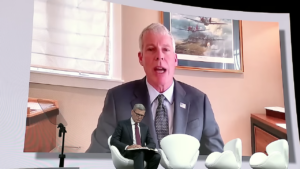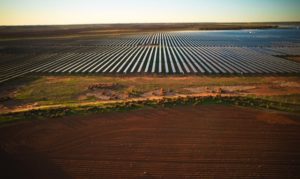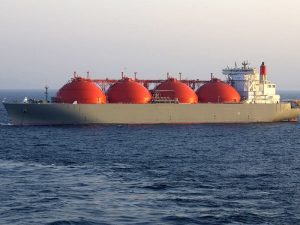 Innovation. It is the big buzzword, both in Australia and among the major international companies at the climate talks in Paris.
Innovation. It is the big buzzword, both in Australia and among the major international companies at the climate talks in Paris.
But sometimes you wonder if Malcolm Turnbull and others are simply channeling the thoughts of climate contrarian Bjorn Lomborg, who wants renewables stuffed back inside a test tube until a “competitive” technology emerges.
But one of the major reasons why there is such optimism in Paris, and business deals being done in the corridors, is that many believe the technology already exists.
One such is Mark Jacobson, the Stanford University energy expert whose team last week unveiled scenarios that could see wind, water and sunlight power the world’s economies, transport and heat included – and save money.
RenewEconomy caught up with Jacobson in Paris, and discussed his research at length. Here is a 5 minute interview that we put to tape for those interested:
Jacobson has conducted several major studies. One is completed research that modeled the 48 mainland states (apart from Hawaii and Alaska) and found that wind, solar and hydro could power the whole economy, without battery storage.
The result in the US was a levellised cost of energy of $US10.6c/kWh, around the same as it would be had fossil fuels continued to dominate. And it delivered an estimated $US0.17c/kWh in savings from the avoided impacts of coal pollution on health, and avoided climate impacts.
“It’s a mistake to think that you need to spend billions more on research to be able to achieve 100 per cent renewable energy, and to think that we can’t reduce emissions dramatically until we find the next technology miracle,” Jacobson says.
“We don’t need (new technologies). It’s not that innovation is not good, it’s just that the solution is already there. We can have a clean and a low-cost grid.”
In Jacobson’s solution, battery storage does not yet feature, mainly because right now it is more expensive than other alternatives, such as existing hydro, pumped hydro, and various thermal storage technologies.
He points, for instance, to Stanford itself, which uses excess solar electricity during the day to create a huge block of ice and then use that for air conditioning. Three weeks ago, a natural gas plant at the campus was bulldozed, making way for a series of heat exchangers, boilers and a chiller.
Conversely, a small town in Canada buries excess heat from solar collectors in summer in insulated rocks underground to provide heating in winter.
Such technologies can be replicated on a grander scale. Demand response and efficiency can reduce the peaks. “You don’t need to run waste water treatment plants at four in the afternoon,” he says.
“We are looking to create a whole new dynamic. You can control when you want the power, and when you have got it.
“This is not a difficult problem from technical or economic point of view – it is only a social and political issue.”
Still, the signs on the political front are promising. The three remaining Democrat candidates, including Hilary Clinton and Bernie Sanders, have both stated their goal for 100 per cent renewables, and cited Jacobsen’s work and his WWS scenario. Democrat members of Congress recently introduced a bill that wanted to achieve the same (it got voted down by Republicans).
The second major study, unveiled last month although not fully completed, painted a similar scenario for the world.
“It is technically and economically feasible. It is efficient and we have the wherewithal to do it,” Jacobson says.
He says that it is starting to be put into effect, but at a much slower pace than needed. He says the world needs to get to 80 per cent renewables by 2030, and to 100 per cent by 2050.
“People say we can’t do this without nuclear or carbon capture or storage. But that is nonsense.”
CCS, he says, will increase energy use and not remove all emissions, even if it was affordable. Nuclear, he says, is two to four times the cost of solar and wind energy, and takes too long to build.










